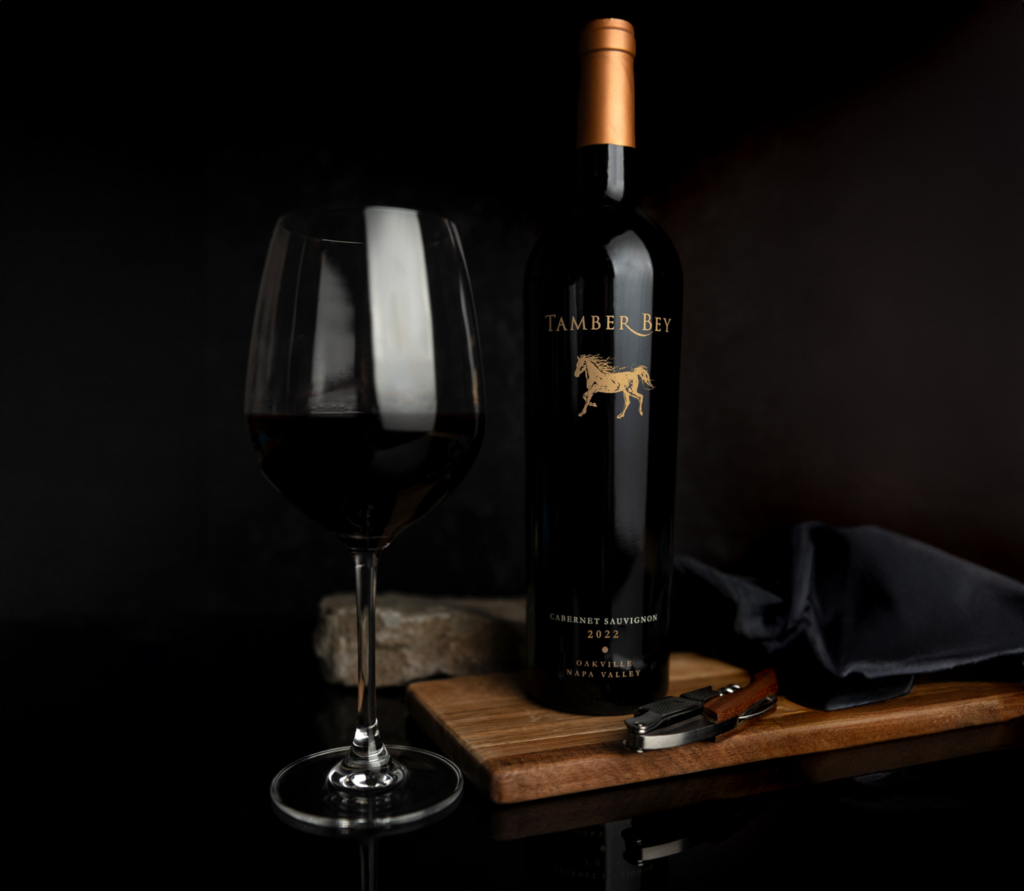
Everything about this valley floor vineyard says “elevated.”
By J. Waitte
When Tamber Bey vintner Barry Waitte purchased a 10-acre property located in the southeast corner of the Oakville Appellation in 2000, he had a vision to plant a small vineyard on what he called his “postage-stamp-sized piece of heaven in the most renowned appellation for growing Cabernet Sauvignon.” Barry possessed great respect for the vineyards, vintners, and history of the appellation, and he wanted to be a part of it. Situated in the center of the newly acquired property was a flat, 3-acre field that at one time had been an orchard. This was where he would plant his Oakville dream.
One of Barry’s favorite stories to tell is how the Oakville Estate Vineyard came to fruition. He had just hired a young winemaker named Thomas Rivers Brown to head up his fledgling winemaking program. Barry had previously purchased a 60-acre vineyard in the nearby Yountville Appellation, which is now known as the Deux Chevaux Vineyard. Thomas was tapped to make Cabernet Sauvignon, Merlot and Chardonnay from that vineyard and to also consult on the planting of the new Oakville Estate Vineyard and then make the wine.
As Barry tells it, Thomas would come by with bottles of Cabernet Sauvignon. The two would sit in lawn chairs on the edge of the site and taste the wines while discussing clonal varietals and watching the sun track across the sky. While Barry considered this “serious research,” Thomas was actually doing what any good winemaker would do, which was to test his client’s palate to determine what style of wine he or she preferred. Thomas knew that it was in his best interest to make a wine that Barry liked.
As a result of this “research,” Brown selected clones 337 and 4 to plant on the site. He also determined the ideal the orientation of the rows to maximize optimal sun exposure and the trellis structure. The vines were planted in a tight formation—three feet apart with four feet between the rows. More than 9,000 young vines were planted. The vineyard was born.
The first vintage produced was 2002. The vines were young, and the resulting wine reflected this immaturity. Only a few barrels were produced, as 80% of the fruit had been dropped. The first “commercial” vintage was 2003. This vintage showed the potential of the vineyard and Oakville terroir: Cool marine influences and fog contributing to cool summer mornings and a calming marine breeze in the late afternoon. The gravelly silt loams, sedimentary in origin, and moderately fertile soils produced ripe, violety aromas, rich yet supple flavors, and firm tannins.
The vineyard yields on average 3.5 tons of fruit per acre each year. The grapes are harvested by hand, meticulously sorted, fermented in small batches, and aged 18 months in French oak barrels. Just one wine is produced, the Oakville Estate Cabernet Sauvignon. Over the years, even with periodic changes in winemakers, this wine has exhibited consistency in style, routinely garnering 90+ point ratings from the top wine critics. Here is a sample of those reviews over the last five years. (Note: this wine was not produced in 2020 due to the Napa wildfires.)
2022 Cabernet Sauvignon Oakville Estate Vineyard
95+, The Wine Advocate
The 2022 Cabernet Sauvignon Oakville Estate Vineyard is an undeniable beauty. Loamy earth, mocha-tinged oak, black cherries and cassis all mingle easily on the nose, while the medium to full-bodied palate is richly concentrated and structured, framed by velvety tannins that linger harmoniously on the long, mouthwatering finish. Joe Czerwinski
2021 Cabernet Sauvignon Oakville Estate Vineyard
93, Wine Spectator
92, James Suckling
2019 Cabernet Sauvignon Oakville Estate Vineyard
94 Wine Advocate
92 Wine Spectator, James Suckling, Jeb Dunnuck
2018 Cabernet Sauvignon Oakville Estate Vineyard
93 Wine Spectator
92 James Suckling
2017 Cabernet Sauvignon Oakville Estate Vineyard
93 James Suckling
92 Wine Enthusiast
90 Wine Advocate
